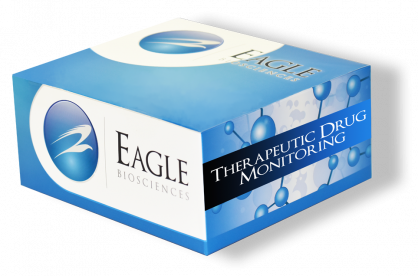Aflibercept ELISA Assay Kit
The Aflibercept ELISA Assay Kit is For Research Use Only
Size: 1×96 wells
Sensitivity: 5 ng/mL
Dynamic Range: 6 – 200 ng/mL
Incubation Time: 2 hours
Sample Type: Serum, Plasma
Sample Size: 10 µL
Alternative Names: Eyelea, Zaltrap
Assay Background
The drug Aflibercept (trade names Eylea ®, Zaltrap ®) is a recombinant fusion protein consisting of VEGF-binding portions from the extracellular domains of human VEGF receptors 1 and 2 fused to the Fc portion of human IgG1. Aflibercept has broad affinity for all ligands that bind to these receptors, including isoforms of VEGF-A, VEGF-B, and placental growth factors. Aflibercept demonstrated antitumour effects and antiangiogenic activity as a single agent and enhanced activity in combination with chemotherapy.
Identification of biomarkers for (non-)response and risk factors for adverse drug reactions that might be related to serum concentrations and maintaining the effective concentration of Aflibercept in order to potentially avoid some side effects with a reliable method might be beneficial.
STORAGE AND STABILITY OF THE KIT
The kit is shipped at ambient temperature and should be stored at 2-8°C. Keep away from heat or direct sun light. The microtiter strips are stable up to the expiry date of the kit in the broken, but tightly closed bag when stored at 2–8°C.
The usual precautions for venipuncture should be observed. It is important to preserve the chemical integrity of a blood specimen from the moment it is collected until it is assayed. Do not use grossly hemolytic, icteric or grossly lipemic specimens. Samples appearing turbid should be centrifuged before testing to remove any particulate material.



